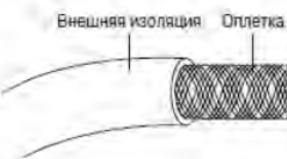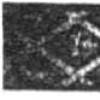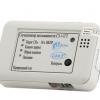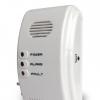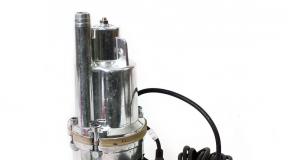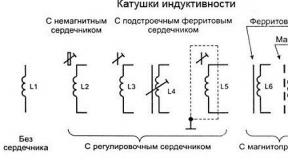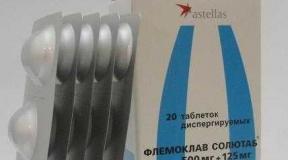Advantan emulsion instructions. Fenistil emulsion - instructions. Release form and packaging
Registration number: LP-000794
International generic name: Dimetinden (Dimetindenum).
Chemical Name: N,N-Dimethyl-2-1H-inden-2-yl]-ethylamine maleate
Dosage form: emulsion for external use
Composition:
- Active substance: 1 g of emulsion contains 1.00 mg of dimethindene maleate.
- Excipients: benzalkonium chloride 0.1 mg, benzyl alcohol 5.0 mg, utilhydroxytoluene 0.2 mg, disodium edetate 0.5 mg, cocoyl caprylocaprate 25.0 mg, liquid paraffin 25.0 mg, cetostearomacrogol 20.0 mg, carbomer about 4.0 mg, sodium hydroxide, a solution of 30% m / m about 4.0 mg, propylene glycol 150.0 mg, water about 765.2 mg.
Description: Homogeneous semi-liquid whitish emulsion with a slight smell of benzyl alcohol.
Pharmacotherapeutic group: Antiallergic agent-H1-histamine receptor blocker.
ATX code: D04AA13
Pharmacological properties
Pharmacodynamics
Antihistamine, antiallergic and antipruritic agent. H1-histamine receptor blocker, is competitive antagonist histamine.
The drug reduces the increased capillary permeability associated with allergic reactions. When applied to the skin, the Fenistil® emulsion reduces itching and irritation caused by allergic skin reactions, which is due to the antikinin and anticholinergic effects of the drug.
Fenistil® emulsion also has a pronounced local anesthetic effect.
At topical application the drug quickly penetrates the skin and provides a quick onset of action - in a few minutes. The emulsion base of the drug provides cooling, softening and moisturizing properties of the drug.
Pharmacokinetics
When applied topically, it penetrates the skin well, systemic bioavailability is about 10%.
Indications for use
Skin itching of various origins (except for those associated with cholestasis): itchy dermatoses, also (mild).
Contraindications
Hypersensitivity to dimethindene and other components that make up the drug, angle-closure glaucoma, hyperplasia prostate, childhood up to 1 month, especially premature babies.
Carefully
Pregnancy I trimester, lactation period.
Use during pregnancy and during breastfeeding
The use of the drug in the first three months of pregnancy is possible only after consulting a doctor. In the II and III trimesters of pregnancy, as well as during lactation, the Fenistil® emulsion should not be used on large areas of the skin, especially if there are signs of inflammation or bleeding. Nursing mothers should not apply the drug to the nipples of the mammary glands.
Dosage and administration
Apply externally.
The emulsion is applied 2 to 4 times a day on the affected areas of the skin.
Side effect
Very often - more than 1/10 appointments (≥ 10%); often - more than 1/100, but less than 1/10 appointments (≥ 1%, but ≤ 10%); infrequently - more than 1/1000, but less than 1/100 appointments (≥ 0.1%, but ≤ 1%); rarely - more than 1/10000, but less than 1/1000 appointments (≥ 0.01%, but ≤ 0.1%); very rarely - less than 1/10,000 appointments (≤ 0.01%).
From the skin and subcutaneous tissues:
- Rarely: dryness, burning of the skin.
- Very rare: skin rash, itching.
Overdose
Cases of overdose are not described.
In case of accidental ingestion of large doses of the drug, the usual supportive measures (taking activated charcoal, saline laxatives, and other measures) should be carried out, since there is no specific antidote for this group of drugs.
Interactions with other drugs
Not described.
In infants and children younger age do not use the drug on large areas of the skin, especially in the presence of inflammation or bleeding. In case of severe itching or damage to large areas of the skin, the drug can be used only after consulting a doctor.
When using the Fenistil® emulsion on large areas of the skin, prolonged exposure to sunlight should be avoided.
If, during the period of application of the Fenistil® emulsion, the severity of the symptoms of the disease does not decrease or, on the contrary, increases, you should consult a doctor.
Glucocorticosteroid for local use.
Active ingredients
Brand
Release form
Emulsion
Composition
1 g emulsion contains
Active ingredient: methylprednisolone aceponate 0.001 g.
Excipients: medium chain triglycerides - 0.150 g, softisan 378 - 0.050 g, polyoxyethylene-2-stearyl alcohol - 0.040 g, polyoxyethylene-21-stearyl alcohol - 0.040 g, glycerol 85% - 0.030 g, disodium edetate - 0.010 g, benzyl alcohol - 0.0125 g, purified water - 0.6755 g.
Pharmacological effect
Active ingredient Advantan - methylprednisolone aceponate - is a non-halogenated steroid.
Pharmacokinetics
Methylprednisolone aceponate is hydrolyzed in the epidermis and dermis. The main and most active metabolite is 6α-methylprednisolone-17-propionate, which has a significantly higher affinity for glucocorticosteroid receptors in the skin, which indicates the presence of its "bioactivation" in the skin.
The intensity of absorption through the skin with artificial inflammation is very low (0.27% of the dose), which is only slightly higher than through healthy skin(0.17%). In the case of whole body treatment (for example, for sunburn), the systemic dose is about 4 µg per 1 kg of body weight per day, which excludes systemic effects.
After entering the systemic circulation, 6α-methylprednisolone-17-propionate is rapidly conjugated with glucuronic acid and, thus, in the form of 6α-methylprednisolone-17-propionate glucuronide is inactivated.
Metabolites of methylprednisolone aceponate are eliminated mainly by the kidneys with a half-life of about 16 hours. Methylprednisolone aceponate and its metabolites do not accumulate in the body.
Indications
Inflammatory skin diseases sensitive to topical glucocorticosteroid therapy:
Atopic dermatitis, neurodermatitis, childhood eczema,
Simple contact dermatitis
Allergic (contact) dermatitis,
true eczema,
seborrheic dermatitis/eczema,
microbial eczema,
Photodermatitis, sunburn.
Contraindications
Tuberculous or syphilitic processes in the area of application of the drug,
Viral diseases (for example, chickenpox, herpes zoster), in the area of application of the drug,
Rosacea, perioral dermatitis in the area of application of the drug,
Children's age up to 4 months,
Areas of the skin with manifestations of a reaction to vaccination,
Hypersensitivity to the components of the drug.
Use during pregnancy and lactation
If it is necessary to use Advantan emulsion during pregnancy and lactation, the potential risk to the fetus and the expected benefit of treatment to the mother should be carefully weighed. Not recommended during these periods. long-term use drug on large surfaces of the skin.
Nursing mothers should not apply the drug to the mammary glands.
Dosage and administration
Outwardly. Adults and children from 4 months of age. The drug is applied 1 time per day (for the treatment of sunburn 1-2 times a day) in a thin layer on the affected areas of the skin, gently rubbing.
Usually the course of treatment should not exceed 2 weeks.
If the skin becomes excessively dry while using Advantan emulsion, it is necessary to proceed to dosage form with a higher fat content (Advantan ointment or Advantan fatty ointment).
Side effects
Usually the drug is well tolerated.
Very rarely (less than 0.01% of cases), local reactions such as itching, burning, erythema, and the formation of a vesicular rash can be observed. If the drug is used for more than 4 weeks and / or on an area of 10% or more of the body surface, the following reactions may occur: skin atrophy, telangiectasia, striae, acneiform skin changes, systemic effects due to absorption of the corticosteroid. During clinical research none of the above side effects was not observed when using Advantan emulsion up to 12 weeks in adults and up to 4 weeks in children.
In rare cases (0.01% - 0.1%), folliculitis, hypertrichosis, perioral dermatitis, skin depigmentation, allergic reactions on one of the components of the drug.
Overdose
In a study of the acute toxicity of methylprednisolone aceponate, no risk was identified acute intoxication with excessive single skin application(application of the drug over a large area under conditions favorable for absorption) or unintentional ingestion.
With excessively long and / or intensive use of glucocorticosteroids, skin atrophy (thinning of the skin, telangiectasia, striae) may develop.
With the appearance of atrophy, the drug must be discontinued.
Interaction with other drugs
Not found.
special instructions
In the presence of bacterial complications and / or dermatomycosis, in addition to therapy with Advantan, it is necessary to carry out specific antibacterial and / or antimycotic treatment.
Avoid getting the drug in the eyes.
As with the use of systemic glucocorticosteroids, glaucoma may develop after topical use of glucocorticosteroids (for example, when using large doses, or very long-term use of occlusive dressings or application to the skin around the eyes).
Shelf life after opening
Store an opened aluminum tube for 3 months. Do not use after the expiration date.
Advantan is an effective anti-inflammatory agent. Instructions for use prescribes to rub the cream, ointment and emulsion 0.1% for skin pathologies: eczema, dermatitis, allergic rashes in adults and children, including newborns.
Release form and composition
Advantan is produced in the following dosage forms:
- Cream for external use 0.1%.
- Ointment for external use (including oily) 0.1%.
- Emulsion for external use 0.1%. .
- Ointment 0.1% is a white or slightly yellowish homogeneous opaque mass.
Main active substance The drug is methylprednisolone aceponate.
Indications for use
What helps Advantan? Ointment and cream are prescribed for the treatment of inflammatory skin diseases sensitive to topical glucocorticoid therapy. The drug is effective for:
- dermatitis (simple contact or allergic contact);
- neurodermatitis;
- children's, microbial, professional, dyshidrotic and true eczema;
- atopic dermatitis.
Indications for the use of the emulsion
The emulsion has the same indications for use as all other forms of Advantan. In addition, it can be used for seborrheic dermatitis, photodermatitis, and also to eliminate the effects of sunburn.
Instructions for use
Advantan is used externally. For adults and children from 4 months of age, the drug is applied once a day with a thin layer to the affected areas of the skin. Continuous daily use of a cream, ointment or fatty ointment is for adults no more than 12 weeks, for children no more than 4 weeks. The course of treatment with Advantan in the form of an emulsion is no more than 2 weeks.
The cream is a dosage form from little content fat and high water content, therefore it is recommended for subacute and acute inflammation without pronounced weeping.
The cream provides elimination inflammatory process both on smooth skin and on the scalp, incl. on oily skin.
Ointment is a dosage form with a balanced ratio of fat and water, therefore it is recommended for subacute or chronic course inflammatory diseases of the skin, not accompanied by weeping.
The ointment has a therapeutic effect, also helping to eliminate dry skin and restore its normal fat content.
Fatty ointment is an anhydrous dosage form, therefore it is recommended for the treatment of long-term chronic inflammatory skin processes with very dry skin. The occlusive effect of the oily ointment provides a pronounced therapeutic effect even with significant lichenification and infiltration.
The emulsion is applied to the skin in a thin layer, gently rubbing. For sunburn, the emulsion is used 1-2 times a day. If the skin dries excessively when using the emulsion, it is necessary to switch to a dosage form of Advantan with a higher fat content (ointment or fatty ointment).
pharmachologic effect
The active ingredient in Advantan, methylprednisolone aceponate, is a non-halogenated synthetic steroid. The drug has a local anti-inflammatory effect, reduces the manifestations of allergies, slows down the hyperproliferation of skin cells, eliminating the external manifestations and unpleasant sensations of allergies.
Methylprednisolone aceponate is metabolized in the skin to form 6a-methylprednisolone-17-propionate. This metabolite binds to glucocorticoid receptors of cells, which leads to the stimulation of some biological processes, including the production of macrocortin.
Macrocortin inhibits the release of arachidonic acid and reduces the formation of inflammatory markers such as prostaglandins and leukotrienes. The use of the drug externally has a minimal systemic effect. Repeated application of Advantan cream and ointment to a large part (up to 60%) of the skin surface does not lead to disruption of the adrenal glands.
The level of cortisol in the blood plasma and its circadian rhythm remains within the normal range. Clinical studies on the use of the drug in children for up to 4 weeks and in adults up to 12 weeks showed no skin atrophy or the appearance of telangiectasias, striae and acne-like rashes.
Contraindications
In accordance with the instructions, Advantan has the following contraindications for use: 
- Lupus.
- Syphilis.
- Intolerance to any component of the drug.
- Viral infections.
Do not apply Advantan to large areas of the skin for longer than 3 months. It is permissible for pregnant women to use the drug, but with caution and under the supervision of the attending physician.
Side effects
Usually the drug is well tolerated. In some cases, very rarely, itching, burning, erythema, vesicular rash may appear. With prolonged use on large areas of the skin, skin atrophy, striae, telangiectasia, acneiform skin changes and systemic effects caused by absorption of the corticosteroid may develop.
Children, during pregnancy and lactation
If necessary, the use of the drug Advantan during pregnancy and lactation should carefully weigh the expected benefit of therapy for the mother and the potential risk to the fetus or baby. During these periods, long-term use of the drug on large skin surfaces is not recommended. Nursing mothers should not apply the drug to the mammary glands. .
For children
Children Advantan prescribed for allergic and inflammatory skin diseases.
For infants and older children, they are prescribed in the form of an ointment or cream, since there is currently no accurate data on the safety of using the emulsion.
Often parents ask: "Is Advantan hormonal ointment or not"? or "Hormonal cream or not"? The active substance of the drug - methylprednisolone - is a synthetic glucocorticosteroid, that is, the drug is hormonal.
Since the medicine contains hormones, it should be prescribed very carefully (this is especially true for infants). However, in the presence of severe clinical symptoms allergies, the remedy can be recommended as early as four months of age.
In accordance with the instructions, both cream and ointment in a child can be used for no more than 4 weeks. Apply the medicine to the skin once a day. The drug is hormonal, so they need to stop treatment gradually.
What is better to choose - cream or ointment?
The choice of dosage form is determined by the condition of the skin:
- normal skin (not dry, and without weeping elements of the rash) - ointment;
- for dry skin, a fatty ointment is the best choice;
- for diseases that are characterized by weeping, doctors recommend using a cream, and for the treatment of sunburn and photodermatitis, it is best to use an emulsion.
Special instructions and drug interactions
In the presence of bacterial dermatoses and / or dermatomycosis, in addition to therapy with Advantan, it is necessary to carry out a specific antibacterial or antifungal treatment. Avoid getting the drug in the eyes.
As with the use of systemic corticosteroids, glaucoma may develop with topical corticosteroids (for example, after high doses or very prolonged use, use of occlusive dressings or application to the skin around the eyes).
Analogues of the drug Advantan
Analogues containing Methylprednisolone have a similar effect:
- Lemod.
- Medrol.
- Depo-Medrol.
- Urbazon.
- Solu-Medrol.
It must be borne in mind that these are analogous drugs. The basis of the first is methylprednisolone, the second contains mometosone furoate as an active substance. Unlike Advantan, which is allowed to be prescribed even to 4-month-old children, Elokom is indicated only from the age of 2.
Holiday conditions and price
The average cost of Advantan (ointment 15 g) in Moscow is 612 rubles. The price of a tube of 15 g of cream is 589 rubles. The cost of an emulsion of 20 g is 578 rubles. Released without a prescription.
The drug must be stored in a cool place (cream, ointment and emulsion - at an air temperature of up to 25 C, fatty ointment - no higher than 30 C). Shelf life - up to 3 years (for oily ointment - up to 5 years).
Post Views: 235
Emulsion for external use 0.1% white, opaque
Composition
methylprednisolone aceponate 1 mg
Excipients: medium chain triglycerides, softisan 378, polyoxyethylene-2-steryl alcohol, polyoxyethylene-21-steryl alcohol, glycerol 85%, benzyl alcohol, sodium edetate, purified water.
Pharmacodynamics
GCS for external use is a non-halogenated synthetic steroid. When applied externally, Advantan suppresses inflammatory and allergic skin reactions, as well as reactions associated with increased proliferation, which leads to a decrease in objective symptoms (erythema, edema, lichenification) and subjective sensations (itching, irritation, pain).
When using methylprednisolone aceponate externally, the systemic effect is minimally expressed both in humans and in animals. After repeated application of Advantan on large surfaces (40-60% of the skin surface), as well as when applied under an occlusive dressing, there are no adrenal dysfunctions in either children or adults: the level of cortisol in the blood plasma and its circadian rhythm remain within the normal range, there is no decrease in the level of cortisol in the daily urine.
In clinical studies, when using Advantan in the form of an ointment, cream or fatty ointment, up to 12 weeks in adults and up to 4 weeks in children (incl. early age) development of skin atrophy, telangiectasias, striae and acne-like rashes was not revealed.
Methylprednisolne aceponate (especially its main metabolite, 6alpha-methylprednisolone-17-propionate) binds to intracellular glucocorticoid receptors. The steroid-receptor complex binds to specific regions of DNA, thus causing a series of biological effects.
In particular, the binding of the steroid-receptor complex to DNA leads to the induction of macrocortin synthesis. Macrocortin inhibits the release of arachidonic acid and thus the formation of inflammatory mediators such as prostaglandins and leukotrienes.
GCS inhibition of the synthesis of vasodilating prostaglandins and potentiation of the vasoconstrictive action of adrenaline leads to a vasoconstrictor effect.
Pharmacokinetics
Suction
The intensity of absorption through the skin depends on the condition of the skin, dosage form and method of application (on an open area of the skin or under an occlusive dressing). When using an ointment, cream or fatty ointment, transdermal absorption in adolescents and adults suffering from neurodermatitis and psoriasis was less than 2.5%, which differed only slightly from absorption through intact skin in adult healthy volunteers (0.5-1.5%).
When using the drug in the form of an emulsion, absorption through the skin with artificial inflammation was very low (0.27%) and slightly exceeded absorption through healthy skin (0.17%). Absorption through the skin with the stratum corneum removed was significantly higher (15% of the dose).
In the case of whole body treatment (for example, with sunburn), the systemic dose is about 4 mcg / kg body weight / (which excludes systemic effects).
Metabolism and excretion
Methylprednisolone aceponate is hydrolyzed in the epidermis and dermis. The main and most active metabolite is 6alpha-methylprednisolone-17-propionate, which has a significantly higher affinity for skin corticoid receptors, which indicates the presence of its bioactivation in the skin.
After entering the systemic circulation, 6alpha-methylprednisolone-17-propionate is rapidly conjugated with glucuronic acid and thus inactivated.
Metabolites of methylprednisolone aceponate (the main of which is 6alpha-methylprednisolone-17-propionate-21-glucuronide) are excreted mainly by the kidneys, with a half-life of about 16 hours.
Methylprednisolone aceponate and its metabolites do not accumulate in the body.
Side effects
In isolated cases: pruritus, burning, erythema, blistering at the site of application of the drug.
Rarely: as with the use of other GCS - folliculitis, hypertrichosis, perioral dermatitis, allergic reactions.
Selling Features
Released without a prescription
Special conditions
In the presence of bacterial dermatoses and / or dermatomycosis, in addition to therapy with Advantan, it is necessary to carry out specific antibacterial or antifungal treatment.
The emulsion should not be used under an occlusive dressing. It must be borne in mind that diapers (pampers) can create an occlusive effect.
Avoid getting the drug in the eyes.
As with the use of systemic corticosteroids, glaucoma may develop with topical corticosteroids (for example, after high doses or very prolonged use, use of occlusive dressings or application to the skin around the eyes).
Influence on the ability to drive vehicles and control mechanisms
Does not affect the ability to drive vehicles and work with mechanisms.
Indications
Acute inflammatory skin diseases in adults and children aged 4 months and older:
Atopic dermatitis, neurodermatitis;
contact dermatitis;
true eczema;
seborrheic eczema;
microbial eczema;
Dyshidrotic eczema;
degenerative eczema;
Solar dermatitis (severe sunburn).
Contraindications
Tuberculosis of the skin and skin manifestations of syphilis in the area of application of the drug;
Viral skin lesions in the area of application of the drug (for example, with chicken pox, shingles);
Rosacea, perioral dermatitis in the area of application of the drug;
Skin manifestations of reaction to vaccination;
Hypersensitivity to the components of the drug.
drug interaction
The drug interaction of the drug Advantan is not described.
GCS for external use
Active substance
Release form, composition and packaging
◊ Cream for external use white or yellowish, opaque.
Excipients: decyloleate - 100 mg, glyceryl monostearate 40-55% - 85 mg, cetostearyl alcohol (cetyl alcohol 60%, stearyl alcohol 40%) - 25 mg, solid fat - 25 mg, softisan 378 - 75 mg, macrogol stearate - 30 mg, glycerol 85% - 50 mg, disodium edetate - 1 mg, benzyl alcohol - 10 mg, butylhydroxytoluene - 60 mcg, purified water - 597.94 mg.
◊ Ointment for external use white or slightly yellowish, homogeneous, opaque.
Excipients: white soft paraffin - 350 mg, liquid paraffin - 239 mg, white beeswax - 40 mg, emulsifier Dehimuls E - 70 mg, purified water - 300 mg.
5 g - aluminum tubes (1) - packs of cardboard.
15 g - aluminum tubes (1) - packs of cardboard.
20 g - aluminum tubes (1) - packs of cardboard.
25 g - aluminum tubes (1) - packs of cardboard.
30 g - aluminum tubes (1) - packs of cardboard.
50 g - aluminum tubes (1) - packs of cardboard.
◊ Ointment for external use (oily) white or slightly yellowish, translucent.
Excipients: white soft paraffin - 425 mg, liquid paraffin - 394 mg, microcrystalline wax - 150 mg, hydrogenated - 30 mg.
5 g - aluminum tubes (1) - packs of cardboard.
10 g - aluminum tubes (1) - packs of cardboard.
15 g - aluminum tubes (1) - packs of cardboard.
20 g - aluminum tubes (1) - packs of cardboard.
25 g - aluminum tubes (1) - packs of cardboard.
30 g - aluminum tubes (1) - packs of cardboard.
50 g - aluminum tubes (1) - packs of cardboard.
◊ Emulsion for external use white, opaque.
Excipients: medium chain triglycerides - 150 mg, softisan 378 - 50 mg, polyoxyethylene-2-steryl alcohol - 40 mg, polyoxyethylene-21-steryl alcohol - 40 mg, glycerol 85% - 30 mg, disodium edetate - 10 mg, benzyl alcohol - 12.5 mg, purified water - 675.5 mg.
20 g - aluminum tubes (1) - packs of cardboard.
50 g - aluminum tubes (1) - packs of cardboard.
pharmachologic effect
When applied externally, it suppresses inflammatory and allergic skin reactions, as well as reactions associated with increased proliferation, which leads to a decrease in objective symptoms of inflammation (including erythema, edema, weeping, etc.) and subjective sensations (including h. itching, irritation, pain, etc.).
When using methylprednisolone aceponate externally at the recommended dose, the systemic effect is minimally expressed in both humans and animals. After repeated application of Advantan on large surfaces (40-60% of the skin surface), as well as when applied under an occlusive dressing, there are no adrenal dysfunctions: the level of cortisol in the blood and its circadian rhythm remain within the normal range, there is no decrease in the level of cortisol in daily urine .
In the course of clinical studies with the use of Advantan for up to 12 weeks in adults and up to 4 weeks in children (including young children), there was no development of skin atrophy, telangiectasias, striae and acne-like rashes.
Methylprednisolone aceponate (especially its main metabolite, 6α-methylprednisolone-17-propionate) binds to intracellular glucocorticoid receptors. The steroid-receptor complex binds to specific regions of the DNA of immune response cells, thus causing a series of biological effects.
In particular, the binding of the steroid-receptor complex to the DNA of immune response cells leads to the induction of macrocortin synthesis. Macrocortin inhibits the release of arachidonic acid and thus the formation of inflammatory mediators such as prostaglandins and leukotrienes.
GCS inhibition of the synthesis of vasodilating prostaglandins and potentiation of the vasoconstrictor action leads to a vasoconstrictor effect.
Pharmacokinetics
Suction
The degree of percutaneous absorption depends on the condition of the skin, dosage form and method of application (with or without an occlusive dressing). When using an ointment, cream or fatty ointment, percutaneous absorption in children and adults with (neurodermatitis) and psoriasis was no more than 2.5%, which is only slightly higher compared to healthy volunteers (0.5-1.5%).
When using the drug in the form of an emulsion, the intensity of absorption through the skin with artificial inflammation was very low (0.27%), which is only slightly higher than through healthy skin (0.17%). In the case of whole body treatment (for example, for sunburn), the systemic dose is about 4 mcg / kg body weight / day, which excludes systemic effects.
Metabolism and excretion
Methylprednisolone aceponate is hydrolyzed in the epidermis and dermis. The main and most active metabolite is 6α-methylprednisolone-17-propionate, which has a significantly higher affinity for skin glucocorticoid receptors, which indicates the presence of its bioactivation in the skin.
After entering the systemic circulation, 6α-methylprednisolone-17-propionate is rapidly conjugated with glucuronic acid and, thus, in the form of 6α-methylprednisolone-17-propionate, the glucuronide is inactivated.
Metabolites of methylprednisolone aceponate are eliminated mainly by the kidneys, T 1/2 - about 16 hours.
Methylprednisolone aceponate and its metabolites do not accumulate in the body.
Indications
Ointment, cream, fatty ointment
Inflammatory, sensitive to therapy with topical corticosteroids:
- true eczema;
- microbial eczema;
- professional eczema;
- dyshidrotic eczema;
- allergic (contact) dermatitis.
Emulsion
Inflammatory skin diseases sensitive to topical GCS therapy:
— atopic dermatitis, neurodermatitis, children's eczema;
- simple contact dermatitis;
- allergic (contact) dermatitis;
- true eczema;
- seborrheic dermatitis / eczema;
- microbial eczema;
- photodermatitis, sunburn.
Contraindications
- tuberculosis or syphilitic processes in the area of application of the drug;
— viral diseases in the area of application of the drug (for example, with chickenpox, herpes zoster);
- rosacea, perioral dermatitis in the area of application of the drug;
- areas of the skin with manifestations of a reaction to vaccination;
- children's age up to 4 months;
- hypersensitivity to the components of the drug.
Dosage
Adults and children from 4 months the drug is applied 1 time / day with a thin layer on the affected skin.
Continuous daily use of Advantan in the form of a cream, ointment or fatty ointment should not exceed for adults 12 weeks for children– 4 weeks. The course of treatment with Advantan in the form of an emulsion should usually not exceed 2 weeks.
Cream is a dosage form with a low fat content and a high water content, therefore it is recommended for subacute and acute inflammation without pronounced weeping. The cream ensures the elimination of the inflammatory process both on smooth skin and on the scalp, incl. on oily skin.
Ointment is a dosage form with a balanced ratio of fat and water, therefore it is recommended for subacute or chronic course of inflammatory skin diseases that are not accompanied by weeping. The ointment has a therapeutic effect, also helping to eliminate dry skin and restore its normal fat content.
Oily ointment is an anhydrous dosage form, therefore it is recommended for treatment of long-term chronic inflammatory skin processes with very dry skin. The occlusive effect of the oily ointment provides a pronounced therapeutic effect even with significant lichenification and infiltration.
emulsion Apply a thin layer to the affected areas of the skin, gently rubbing. For sunburn, the emulsion is used 1-2 times / day. If the skin dries excessively when using the emulsion, it is necessary to switch to a dosage form of Advantan with a higher fat content (ointment or fatty ointment).
Side effects
Usually the drug is well tolerated.
Very rarely(in less than 0.01% of cases), local reactions such as itching, burning, erythema, and the formation of a vesicular rash can be observed. If the drug is used for more than 4 weeks and / or on an area of 10% or more of the body surface, the following reactions may occur: skin atrophy, telangiectasia, striae, acneiform skin changes, systemic effects due to absorption of the corticosteroid. In clinical studies, none of the above side effects were noted with the use of the drug Advantan up to 12 weeks in adults and up to 4 weeks in children.
In rare cases(0.01-0.1%) folliculitis, hypertrichosis, perioral dermatitis, skin depigmentation, allergic reactions to one of the components of the drug can be observed.
Overdose
When studying the acute toxicity of methylprednisolone aceponate, no risk of acute intoxication was found with excessive single external use (application of the drug over a large area under conditions favorable for absorption) or inadvertent ingestion.
Symptoms: with excessively long and / or intensive local use of GCS, skin atrophy (thinning of the skin, telangiectasia, striae) may develop.
With the manifestation of atrophy, the drug must be discontinued.
drug interaction
No drug interactions have been identified with Advantan.
special instructions
In the presence of bacterial complications and / or dermatomycosis, in addition to therapy with Advantan, it is necessary to carry out specific antibacterial or antifungal treatment.
Avoid getting the drug in the eyes.
As with the use of systemic corticosteroids, glaucoma may develop after topical use of corticosteroids (for example, when using large doses or very long-term use of occlusive dressings or application to the skin around the eyes).
Influence on the ability to drive vehicles and control mechanisms
Not found.
Pregnancy and lactation
If necessary, the use of the drug Advantan during pregnancy and lactation should carefully weigh the potential risk to the fetus and the expected benefit of therapy for the mother. During these periods, long-term use of the drug on large skin surfaces is not recommended.
Oily ointment should be stored at a temperature not exceeding 30 ° C. Shelf life - 5 years.
The drug should be stored out of the reach of children.
